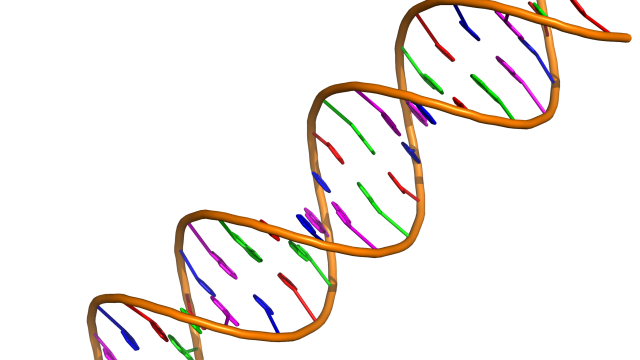Scientists have created a new gene-editing technique that overcomes some of the biggest drawbacks of the popular gene-editing tool CRISPR.
Gene editing’s core goal is to quickly and accurately edit genetic code, as if you could simply rewrite parts to get certain desired traits. New gene-editing techniques such as unintended side effects, like adding extra DNA in the wrong places.
Researchers at the Broad Institute of Harvard and MIT are reporting that their technique, called prime editing, can perform edits with more accuracy and fewer off-target effects. They think it might one day offer a cure for many harmful genetic diseases, like Tay Sachs or sickle cell disease.
DNA is the genetic material that governs how our bodies look and work. It’s double-stranded, comprised of four molecules that make up the four letters of the genetic code. In order to actually use the DNA, the body unwraps it, temporarily separates the strands, and creates a single-stranded copy called RNA.
CRISPR systems work by programming an enzyme, most frequently one called Cas9, with user-supplied custom genetic information in the form of RNA, directing the Cas9 to where it should slice through both of the target DNA’s strands. The cell’s own DNA repair mechanisms then fix the DNA, either incorporating new material supplied by the researchers or deleting the material cut out.
This method is good for making large edits but can have issues making precise edits ” it can cut in the wrong place and it might insert or remove more DNA than intended. Researchers were hoping to devise a more accurate gene-editing technique that avoided these “double-strand breaks.” Base editors edit individual letters, but they are limited and cannot insert or delete DNA.
“If CRISPR/Cas9 and other programmable nucleases are like scissors, and if base editors are like pencils, then you can think of prime editors like word processors, capable of searching for target DNA sequences and precisely replacing them with edited DNA sequences,” David Liu, corresponding author and professor at the Broad Institute of Harvard and MIT, said on a press teleconference.
The researchers started with a disabled Cas9 and fused it to another enzyme, called reverse transcriptase. The disabled Cas9 just tells the system where to cut and then nicks just one of the two DNA strands. The inputted guide RNA strand tells the Cas9 where to search and also contains an extra component: what edit to make.
The reverse transcriptase then copies the parts of the guide RNA with the edits into the loose DNA flap. The cell then fixes the DNA and removes the old flap. The Cas9+reverse transcriptase protein then nicks the unedited side, and the cell fixes the whole strand, incorporating the new genetic material.
The researchers ran 175 edits using the technique and were able to correct the genetic issues that cause Tay Sachs disease and sickle cell disease in test human cells, as well make as other edits, according to the paper published in Nature. The authors write that the method could, in principle, “correct about 89% of known pathogenic human genetic variants.”
That’s not to say their prime editing method is better or worse than CRISPR and base editing ” it’s just different. “Each [technique] has complimentary strengths and weaknesses. We anticipate that all three classes of editing agents have or will have roles in basic research and applications in human therapeutics and agriculture.”
This new technique is sure to make a splash. “I believe that this technology is going to have a pretty big impact, not only on genome editing but in the life sciences more generally, by providing people with the capacity to make precise edits of a modest size quickly and efficiently,” Randall Platt, professor in biological engineering at ETH Zürich who reviewed the paper, told Gizmodo. He noted, however, that the system still results in random edits and is both a little larger, physically, and slightly less efficient than the Cas9 system.
But this system is an important milestone in the search for better gene editing with fewer unintended consequences ” a system that may one day provide cures to deadly diseases and will surely spark more discussion about the ethics of precision gene editing.
